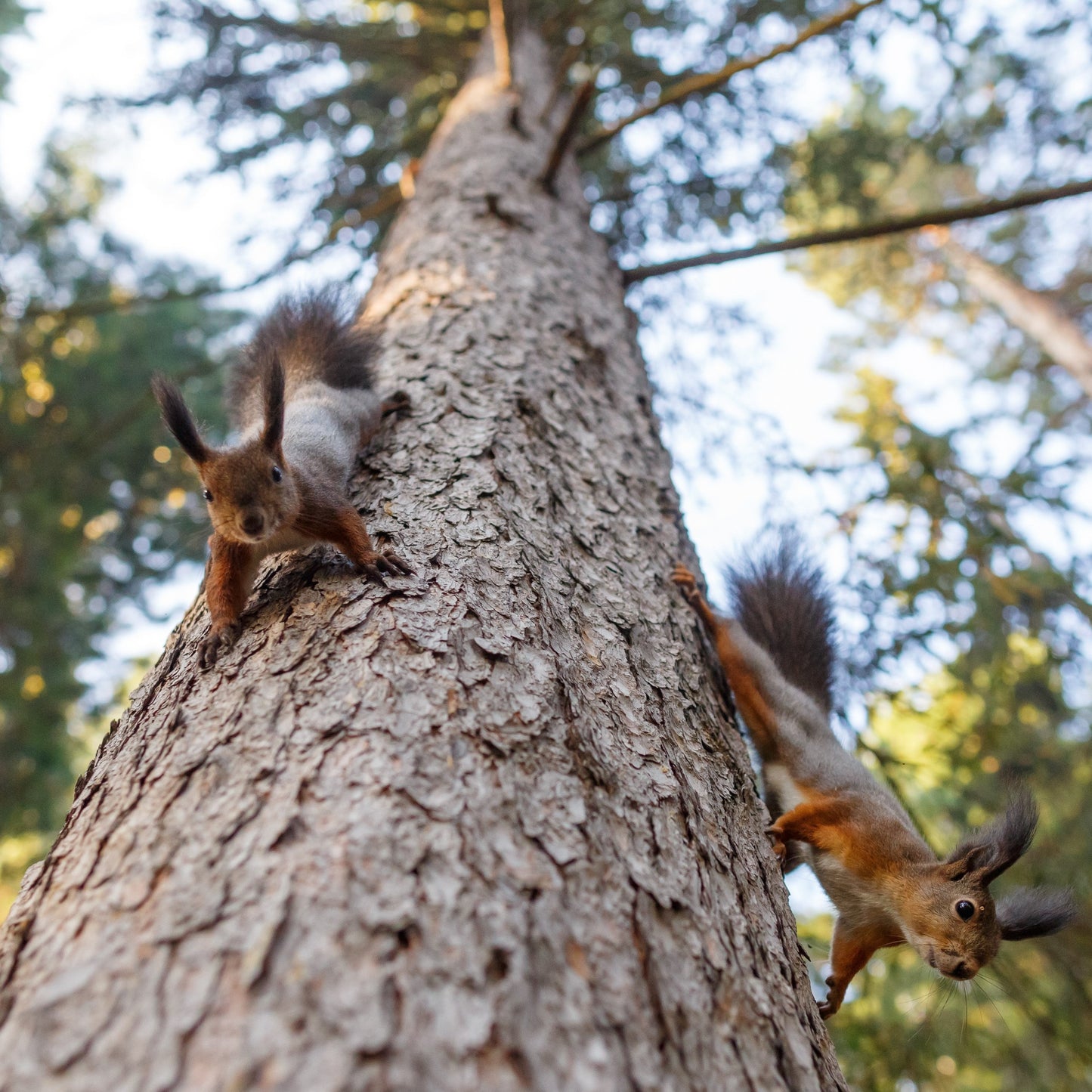Habitat Aid Ltd
Scots Pine (Pinus sylvestris)
Scots Pine (Pinus sylvestris)
Currently restocking
Prices include VAT (when applicable) and delivery to mainland UK.
Couldn't load pickup availability
Scots Pine (Pinus sylvestris)
History
In the Middle Ages a massive pine and birch forest blanketed most of the Highlands, and the last Caledonian pinewoods were finally extensively felled in the 18th and 19th centuries. Going back further, 4,000 years ago Scots Pine was commonplace in England as well, before being driven out by less light demanding deciduous trees. The pollen record from lowland English peats suggests that 9000 years ago it made up 50% of our woodland.
In more recent times it was often later planted in clumps on hilltops as a marker tree for drovers' tracks. I'm sure it will see a return to popularity; Scots Pine likes coarse, nutrient poor soils inclined to drought.
Pine cones can be used for kindling, and their resin for an antiseptic oil.
Value For Wildlife
As a conifer, they provides helpful cover for birds in the Winter; Coal Tits, Goldcrests, and Crossbills are associated with the tree in particular. Scots Pine also provides for other wildlife, including moth caterpillars, weevils, beetles and Red Squirrels.
Plants For Sale
Like all the native trees we sell, our Scots Pines are grown in the UK from UK origin seed. We're currently offering both Pinus sylvestris and Pinus sylvestris subsp. scotica (Caledonian Pine) in 3 litre pots.
Suppliers: RV Roger, British Hardwood Trees.
See our planting and size guide for details and tips on planting. These Scots Pine trees are mostly bare root (see below), and are consequently available for delivery from November until March. During the lifting season there may be up to a month's delay between placing the order and dispatching, due to weather conditions or pressure of orders, which are dealt with in date sequence. Orders for Pinus sylvestris trees placed between March and September are confirmed in October ready for dispatch from November.
Have a look at our videos on what to do when your plants arrive and how to plant a bare root tree. Please ask about larger trees; we can often supply them but will need to quote on an individual basis as carriage varies so much.


